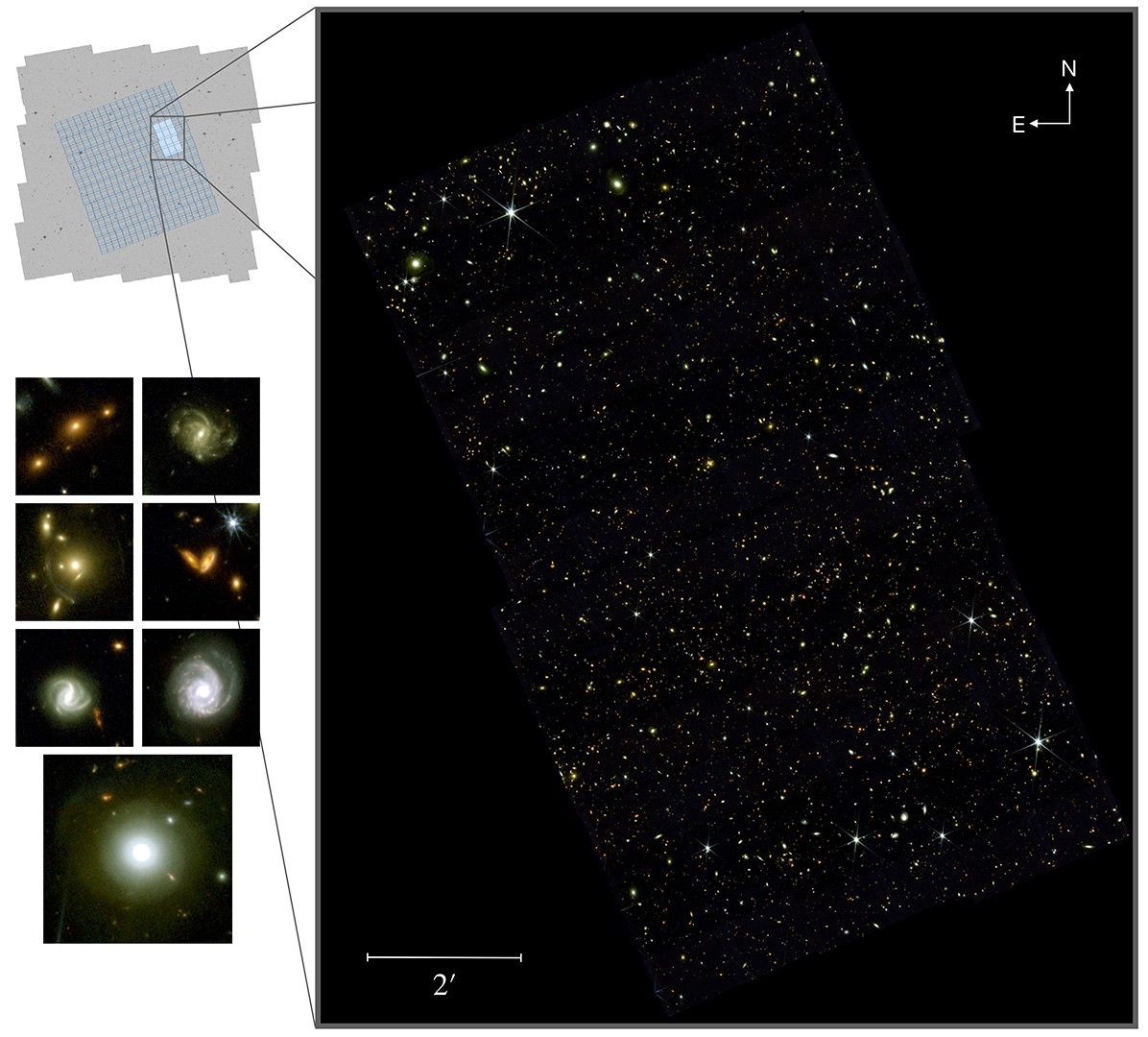Hubble Space Telescope’s Deep Field revealed thousands of galaxies in a seemingly empty spot in the sky. Now, the James Webb Space Telescope has taken deep field observations to the next level with its COSMOS-Web survey, revealing 25,000 galaxies in just six pictures, the first from this new survey.
“It’s incredibly exciting to get the first data from the telescope for COSMOS-Web,” said principal investigator Jeyhan Kartaltepe, from the Rochester Institute of Technology’s School of Physics and Astronomy, in press release. “Everything worked beautifully and the data are even better than we expected. We’ve been working really hard to produce science quality images to use for our analysis and this is just a drop in the bucket of what’s to come.”
Indeed, the first images to be released from the survey accounts for just 4% of the data that will eventually be collected with COSMOS-Web. The images show many types of galaxies, including spiral galaxies, examples of gravitational lensing, and evidence of galaxy mergers. The only objects in the above image that are individual stars are the ones with JWST’s signature diffraction spikes. The rest are galaxies.
COSMOS-Web is the largest program in JWST’s first year and the goal of the survey is to map the earliest structures of the universe, as well as create a deep survey of up to 1 million galaxies. With a total of 255 hours of observing time, COSMOS-Web will map 0.6 square degrees of the sky with NIRCam, roughly the size of three full moons, and 0.2 square degrees with MIRI.

The image above is a mosaic of images taken in early January by JWST’s Near-Infrared Camera (NIRCam) and Mid-Infrared Instrument (MIRI). The survey will It will gather additional data in another 77 pointings of the telescope in April and May and then a remaining 69 in December and January 2024.
While the Hubble Deep Field imagers were stunning, these new images from JWST contain details that are inaccessible to Hubble. As JWST’s operations project scientists Jane Rigby said last year about some of the first engineering images from the new telescope, “Basically, everywhere ever we look, it’s a Deep Field. These engineering images are as sharp and crisp as images that Hubble can take, but at a wavelength of light that Hubble can’t see.”
The goal of COSMOS-Web is to map the earliest structures of the universe and create a wide and deep survey of up to 1 million galaxies. The survey hopes to map cosmic reionization, study galaxy evolution and determine if dark matter can be linked to visible matter.
Over the course of 255 hours of observing time, COSMOS-Web will map 0.6 square degrees of the sky with NIRCam, roughly the size of three full moons, and 0.2 square degrees with MIRI.
“This first snapshot of COSMOS-Web contains about 25,000 galaxies—an astonishing number larger than even what sits in the Hubble Ultra Deep Field,” said principal investigator Caitlin Casey, from the University of Texas at Austin. “It’s one of the largest JWST images taken so far. And yet it’s just 4 percent of the data we will get for the full survey. When it is finished, this deep field will be astoundingly large and overwhelmingly beautiful.”

The team guiding the survey includes nearly 100 astronomers from all over the world.
“JWST has delivered such stunning images of this region that sources are literally popping out in every small patch of the observed sky,” said Santosh Harish, a postdoctoral research associate at RIT. “What were thought to be compact objects based on the best images we had so far, the JWST observations are now able to resolve these objects into multiple components, and in some cases even reveal the complex morphology of these extragalactic sources. With these first observations, we have just barely scratched the surface of what is to come with the completion of this program, next year.”
For an overview of COSMOS-Web’s survey, see the team’s paper on ArXiv. For more information, including downloadable high-resolution images taken for the COSMOS-Web program, see their website.

